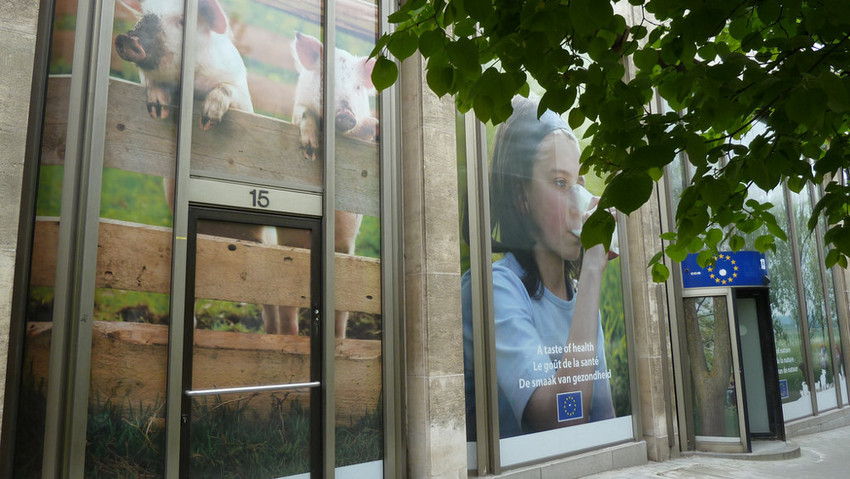Bioeconomy: just a way to set up a smarter agriculture?
After the European Parliament and European Council greenlit the next innovation programme Horizon Europe (2021 – 2027), it has become clearer why most funding for the bioeconomy was included in the proposed €10bn budget for the cluster ‘Food, Bioeconomy, Natural Resources, Agriculture, and Environment.’ EU policy makers seem to see agriculture as the field that could mostly benefit from building a bioeconomy. According to Phil Hogan, outgoing Commissioner for Agriculture & Rural Development, member states will be tasked with outlining their targets in their CAP Strategic Plan, which must include bioeconomy as one of nine key objectives.
Agriculture: Future for Europe
According to estimates from the Commission, 55% of the current €2.2bn revenues of the bioeconomy stem from unsustainable agriculture, forestry, and fishing sectors, which produce around 88 megatonnes of food waste (20% of food production) annually, with an associated cost of €143bn. This waste contributes significantly to global warming through the emission of methane and nitrous oxide. Making primary production more sustainable would help address global food and nutrition security as a major cause of inequality, create an estimated one million jobs in EU rural regions, and contribute significantly to the goal of carbon-neutral production of the Commission’s renewed Bioeconomy Strategy (see European Biotechnology, Winter Edition 2018).
According to John Bell, elected-Head of the Directorate “Healthy Planet” since May (and former Head of Directorates for Bioeconomy and Environment), the context of the EU bioeconomy strategy changed since its implementation in 2012. While originally focussed on the replacement of fossil fuels, it now seeks circularity of the economy in general, but also food and nutrition security, as well as the major question of inequality. Currently, only Austria, Finland, France, Germany, Ireland, Italy, Latvia, Norway, Spain, and the UK have dedicated national bioeconomy strategies at the national level. Italy will present a renewed strategy and action plan in mid-May, and Austria will publish its action plan in autumn 2019.
For Pekka Pesonen, Secretary General of agri-lobby association Copa-Cogeca, “the development of bioeconomy has great potential to support farmers in better valuing their production and help the environment.” However, he said the Commission must open up to novel breeding technologies, such as CRISPR genome editing, which could increase agricultural productivity significantly. According to Joanna Dupont-Inglis, Director of the EU biotech industry group EuropaBio, the bioeconomy strategy could save up to 1.5 billion tons of CO2 annually if only EU policymakers would “allow biotechnology to make progress in the EU.”
Bioeconomy in critical stage?
In contrast to EU farmers, European green chemistry and biotech companies are waiting for a clear political commitment to push the biologisation of industrial production. Recent terminations of joint ventures, such as PEF-producer Synvina (BASF and Avantium) or succinic acid maker Reverdia (DSM and Roquette) and insolvencies, such as of BioAmber, show that the emerging bioeconomy industry is in a critical phase. “Research and technology development continues to advance, and some fields, like fine chemicals and cellulose fibres, are doing quite well,” says bioeconomy expert Michael Carus, CEO of nova-Institute in Cologne, Germany. “But, actual implementation, especially in the chemical and plastics industries, proves to be difficult, in particular, because a clear, political commitment is missing,” he said.
According to Carus, R&D is running at full speed, and despite low oil prices, new chemical and biotech conversion methods “have never been closer to profitability than today.” Also, pilot and demonstration plants can be financed more easily than ever before. But implementation, especially in the chemical and plastics industries, is difficult. “The political will for high-volume implementation is lacking,” says Carus. “The market is currently in a critical phase: many companies have proactively invested in bio-based materials and products, because they expected the legislator to take appropriate measures, but these are not yet coming. […] Now that policy is more focused on recycling, many companies are losing interest in bio-based development. The fact that there are still success stories is due to individual brands that continue to rely on bio-based production and to consumers who no longer want normal petroleum-based plastics.” According to Carus, “we need bio-based feedstocks to green the chemical industry. But, we do need a new overall strategy. The bio-based economy must become part of an overarching, renewable carbon strategy, one in which bio-based efforts represents one important pillar.”




